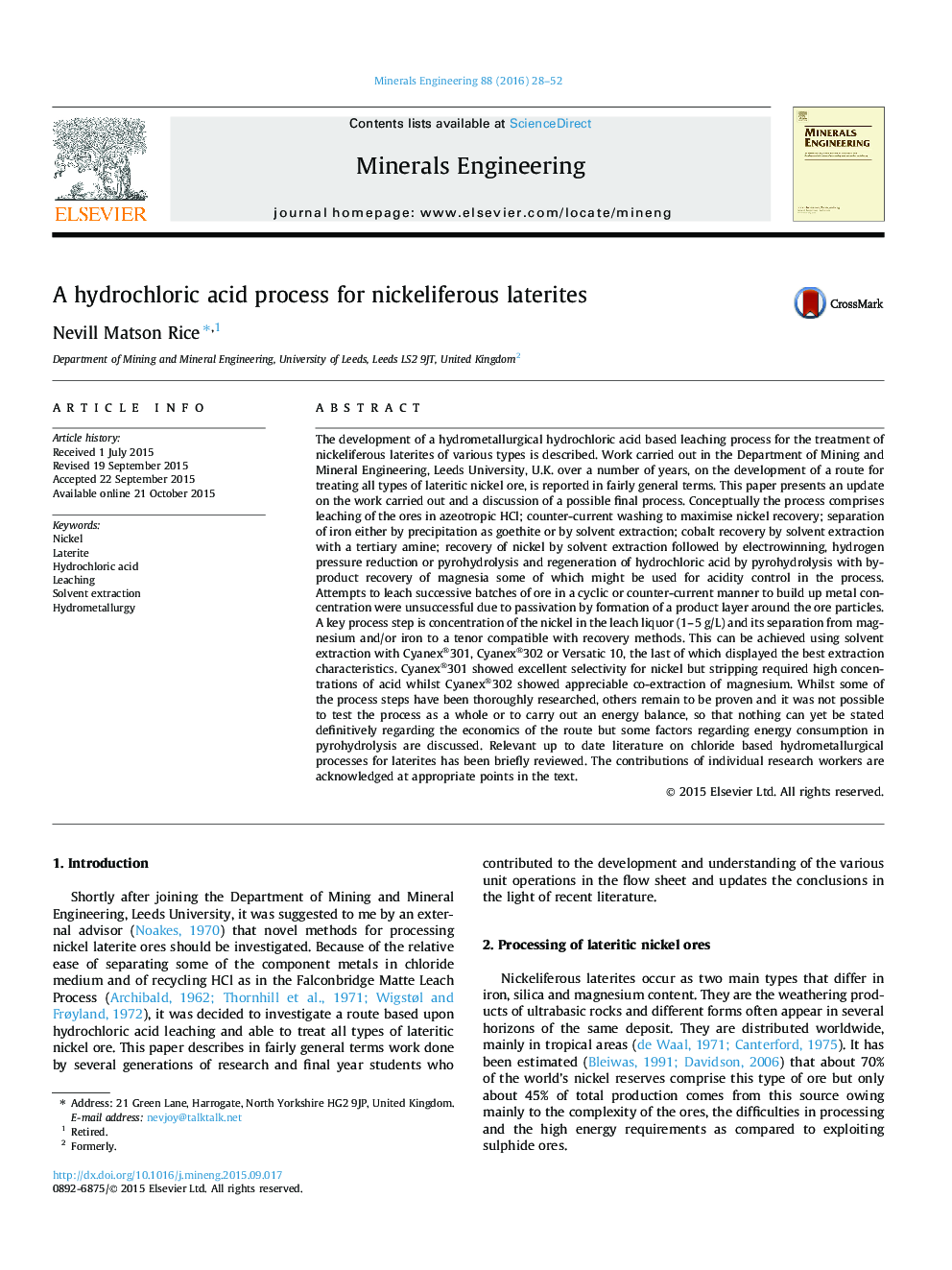| کد مقاله | کد نشریه | سال انتشار | مقاله انگلیسی | نسخه تمام متن |
|---|---|---|---|---|
| 232888 | 465311 | 2016 | 25 صفحه PDF | دانلود رایگان |
• Rapid Ni laterite leaching in HCl at atmospheric pressure. Product layer passivation.
• Separation of Fe by FeOOH precipitation: Ni and Co loss on MgO.
• Solvent extraction for separation of Fe and Co and concentration of Ni.
• Discussion of HCl regeneration by pyrohydrolysis for recovery of Fe and Mg.
• Updated review of literature on chloride leaching processes for Ni laterites.
The development of a hydrometallurgical hydrochloric acid based leaching process for the treatment of nickeliferous laterites of various types is described. Work carried out in the Department of Mining and Mineral Engineering, Leeds University, U.K. over a number of years, on the development of a route for treating all types of lateritic nickel ore, is reported in fairly general terms. This paper presents an update on the work carried out and a discussion of a possible final process. Conceptually the process comprises leaching of the ores in azeotropic HCl; counter-current washing to maximise nickel recovery; separation of iron either by precipitation as goethite or by solvent extraction; cobalt recovery by solvent extraction with a tertiary amine; recovery of nickel by solvent extraction followed by electrowinning, hydrogen pressure reduction or pyrohydrolysis and regeneration of hydrochloric acid by pyrohydrolysis with by-product recovery of magnesia some of which might be used for acidity control in the process. Attempts to leach successive batches of ore in a cyclic or counter-current manner to build up metal concentration were unsuccessful due to passivation by formation of a product layer around the ore particles. A key process step is concentration of the nickel in the leach liquor (1–5 g/L) and its separation from magnesium and/or iron to a tenor compatible with recovery methods. This can be achieved using solvent extraction with Cyanex®301, Cyanex®302 or Versatic 10, the last of which displayed the best extraction characteristics. Cyanex®301 showed excellent selectivity for nickel but stripping required high concentrations of acid whilst Cyanex®302 showed appreciable co-extraction of magnesium. Whilst some of the process steps have been thoroughly researched, others remain to be proven and it was not possible to test the process as a whole or to carry out an energy balance, so that nothing can yet be stated definitively regarding the economics of the route but some factors regarding energy consumption in pyrohydrolysis are discussed. Relevant up to date literature on chloride based hydrometallurgical processes for laterites has been briefly reviewed. The contributions of individual research workers are acknowledged at appropriate points in the text.
Figure optionsDownload as PowerPoint slide
Journal: Minerals Engineering - Volume 88, 15 March 2016, Pages 28–52
